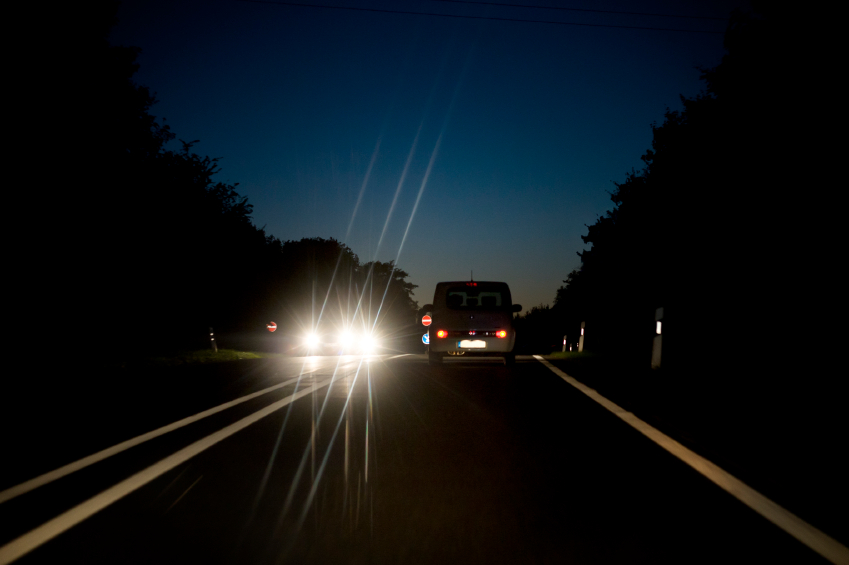Night driving can be challenging even under the best conditions. But add the harsh glare from oncoming headlights, streetlights, or wet roads — and suddenly, visibility drops, reaction times slow, and the risk of accidents increases. If you’ve ever felt blinded by bright beams or struggled to focus while driving after dark, you’re not alone.
This guide explores practical solutions to combat night driving glare so you can stay safe, comfortable, and confident behind the wheel.
Why Glare Is Worse at Night
At night, your pupils naturally dilate to let in more light, which also increases sensitivity to bright or uneven lighting. Combine this with reduced contrast, slower adaptation to light changes, and reflective surfaces — and glare becomes a real safety hazard.
Night driving glare often comes from:
- High-intensity headlights (especially LED or HID types)
- Streetlights and overhead lamps
- Light reflected off wet or dirty windshields
- Oncoming traffic
- Rearview mirror reflections from cars behind you
Thankfully, there are simple and effective steps you can take to reduce glare and improve visibility.

1. Use Anti-Reflective (AR) Coated Lenses To Reduce Night Glare
If you wear prescription glasses, upgrading to lenses with anti-reflective (AR) coating is a game changer for night driving.
How It Helps:
- Reduces internal lens reflections that can double or blur light sources
- Enhances contrast and clarity in low-light conditions
- Minimizes halos and “starbursts” around lights
According to Verywell Health, AR coatings significantly improve night vision and are especially beneficial for frequent drivers.
💡 Pro Tip: Some lenses are specifically marketed as “night driving glasses” or “driving-specific lenses” — look for those if night glare is a persistent issue.
2. Keep Windshields and Mirrors Spotless
A clean windshield is one of the easiest and most overlooked ways to reduce glare.
Why It Works To Reduce Night Vision:
- Dirt, smudges, and streaks on the glass scatter light, making glare worse
- A dusty dashboard can also reflect light onto the windshield at night
What to Do:
- Clean the inside and outside of your windshield at least once a week
- Use a microfiber cloth with a glass-safe cleaner (avoid ammonia-based products)
- Don’t forget to clean your headlights, mirrors, and wiper blades too
🚗 Bonus Tip: Replacing old or damaged windshield wipers helps maintain visibility in rainy or snowy conditions.
3. Adjust Rearview and Side Mirrors
Glare from vehicles behind you can be just as distracting as oncoming traffic.
Try This:
- Flip the night mode or “auto-dimming” setting on your rearview mirror (most cars have a manual or automatic anti-glare feature)
- Tilt side mirrors slightly downward — just enough to reduce direct light while keeping visibility
- Upgrade to auto-dimming side mirrors if available for your vehicle
These simple adjustments can significantly reduce the blinding effect of trailing headlights.
4. Upgrade Your Windshield with a Glare-Reducing Film
For those who drive long distances at night, glare-reducing windshield films can be a smart investment.
Benefits:
- Reduces incoming brightness from oncoming lights
- Blocks UV rays and excessive sunlight during the day
- Protects against glass shatter
Though not a must-have for everyone, it’s a helpful add-on for frequent drivers.
5. Choose the Right Sunglasses — But Only During the Day
Many drivers think sunglasses are just for sunny afternoons, but they also play a role in reducing daytime glare that contributes to visual fatigue — which can carry over into night driving.
What to Look For:
- Category 3 lenses: These are ideal for daytime driving. They provide good protection without being too dark.
- Avoid Category 4 lenses: These are too dark for driving and can actually be dangerous.
- Polarized lenses: Great for reducing reflected glare from surfaces like car hoods or wet roads.
🕶️ Important Note: Never wear tinted or polarized sunglasses at night. They can reduce visibility and make glare worse.
6. Check Your Headlight Alignment
Misaligned or overly bright headlights can cause glare not only for you but for others on the road.
What You Can Do:
- Ask your mechanic to inspect and adjust your headlights during your next service
- Replace older bulbs with modern halogen or LED lights that are properly aimed
- Avoid using high beams unless necessary, and switch them off when approaching another vehicle
Poorly aimed headlights increase your risk — and cause discomfort for other drivers.
7. Consider Yellow-Tinted or Anti-Glare Glasses (With Caution)
Some drivers swear by yellow-tinted “night driving glasses”, which claim to reduce glare from oncoming lights. However, the science is mixed.
Pros:
- May improve contrast slightly in low light
- Some find them psychologically reassuring
Cons:
- They do not significantly reduce glare from headlights
- Can reduce overall light transmission, which might make vision worse in very dark conditions
✔️ Recommendation: If you want to try them, choose a reputable brand and test them during dusk or urban night driving before using them in very dark rural areas.
Quick Checklist: Your Night Driving Glare Toolkit
✅ Prescription glasses with anti-reflective coating
✅ Clean windshield, mirrors, and headlights
✅ Properly aligned headlights
✅ Use of mirror dimming features
✅ Avoid bright dashboard lighting
✅ Caution with night driving glasses
✅ Don’t wear sunglasses at night
Final Thoughts
Glare is more than an inconvenience — it’s a safety risk. But with just a few adjustments and the right tools, you can dramatically improve your nighttime driving experience. Whether it’s investing in AR-coated lenses, keeping your windshield clean, or adjusting your mirrors, these practical solutions help you see more clearly and react more quickly when the sun goes down.

